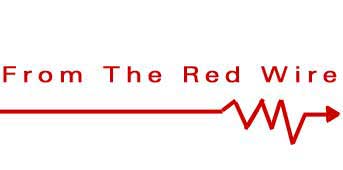| 00 |
NEW YORK, May 17 (IP)- Over the past
3 decades the North Korean
government may have developed and
perfected a secret money exchange
network capable of triggering major
international currency and credit
disruptions.
The existence of this hitherto
totally unknown communist network
was revealed at a press conference
held here today by Global Money
Watch, a prestigious nonprofit
financial watchdog organization.
A pilot activation of this hidden
North Korean system, according to
at least one investigator present
at the conference, produced the
now infamous "Asian Flu": a massive
credit crisis that struck the global
economy back in 1997.
According to long-time Global
investigator James Pak, "We have
good reason to believe the massive
series of currency contractions that
hit world money markets in 1997 were
actually not the spontaneous,
long-overdue systemic blow-offs most
experts now view them to be.
"After deep investigation, it is now
our firm view that the entire
nightmare was, in actual fact,
induced and spread by the deliberate
actions of a secret, world-girdling
money ring controlled from inside
red North Korea."
The '97 convulsions were touched off
by the mid-summer collapse of several
Southeast Asian currencies.
At its peak that fall, the crisis
had spread as far as Russia, Brazil
and Israel.
In opening remarks, Global Money
Watch director Humphrey Hayes said,
"Today our world may be facing two
threats from North Korea. Besides
the A-bombs we keep reading about
in the press, maybe there's an
even graver threat coming out of
Pyongyang- a threat to our world
monetary system.
"Given that North Korea has already
clearly and frighteningly
demonstrated an ability to trigger
a worldwide exchange crisis, you
have to ask yourself: what might
they be able to do now, almost 7
years later?"
Most experts agree that the '97
crisis was the largest and most
dangerous destabilization to hit
the world economy since the Great
Depression.
Before it was finally reigned in
late that year, it had left,
according to Pak, "a long, long
trail of crushed currencies in its
wake. The hope of nations lay dead
for years after. The devastation
stretched all around the entire
planet.
"Even now, all these years later,
several Asian economies are still
recovering from the effects of the
crisis, and they had been real high
flyers," said Pak.
"Out of nowhere, they were hit by
wave after wave of savage merciless
sell panics," he added.
"No one has ever seen so many
apparently strong economies take
such a sudden and awful beating.
And to think, someone deliberately
made it all happen."
Mr. Pak announced these findings
to an obviously largely unprepared
gathering of money specialists and
media .
According to Pak, prior to its
first "live firing" in '97, the
North Koreans had been carefully
developing their "red money ring"
in complete secrecy for over
25 years.
"They may well have pulled in
nearly every big market player at
one time or other over that
period," said Pak. "Of course, all
the non-Korean participants in the
coordinated action knew nothing of
the system behind them.
"They were innocent parties
spurred on by information supplied
through front organizations
controlled by Pyongyang. They knew
nothing of the manipulation used to
control them or of its source."
"The whole operation has escaped
any notice, official or
otherwise," Pak said. "It may be
the ultimate black op of our
times."
According to both Pak and Hayes,
Global Money Watch has been
tracking the operation for more
than 4 years.
"We only finally and conclusively
uncovered the larger picture
recently," said Pak.
According to Hayes, his
organizationís investigations have
grown "ever more intensive and
urgent" as the "facts started to
come together for us."
Despite the prestege of Global
Watch, most of the allegations
about north korea and the Ď97 crisis
received a very mixed response from
the independent experts and
specialists attending the hurriedly
called meeting.
Some, like Sol Tempico of exchange
firm Hectro, Green and Davis, were
cautious. "I havenít had a chance
yet to read the fine print here,"
said Tempico, "But it's a lot to
swallow."
Others went further. "You got to
know we donít hear one like this
too often," said Teedy Smythe, Head
of Developing Markets Anaylsis at
Totenkoff and Dandell. "This is
really hiking in from left field."
Several others even openly scoffed.
The idea of "a Pyongyang money
ring" able to pull in unsuspecting
parties was just "way too much"
for Sidney Kudnik of Smith Bache
Peabody. "I mean, really,
manipulate guys like George Soros?
Please."
The conference attendees were
supplied with a large number of
supporting documents, including
timelines, spreadsheets and graphs,
but all of it seemed not enough to
daunt the sceptics.
"Itíll take a lot more than piles of
figures and equations to convince
me," said Albert Waxmeyer, Head of
Research at Gool Brosted, a leading
money market firm. "The idea that
that whole horrible smash-up had a
'made in Pyongyang' label on it...
Whoís kidding who here?"
At several points the questioning
became heated, but Pak and Hayes
held their ground.
"Who's saying this is business as
usual? Sure it's outside the box,"
said Pak at one high moment, "But
don't just fluff it off. Maybe if
weíre right about this, the
world's vitals may take a kick next
time that's so sharp we all go down
for the count."
After the conference was over,
Hayes conceeded, "Obviously further
probes are needed. We've got to
open the door a lot wider if we
possibly can. The world must take
notice.
"My God, just what are we facing
here?"
|
related articles |

